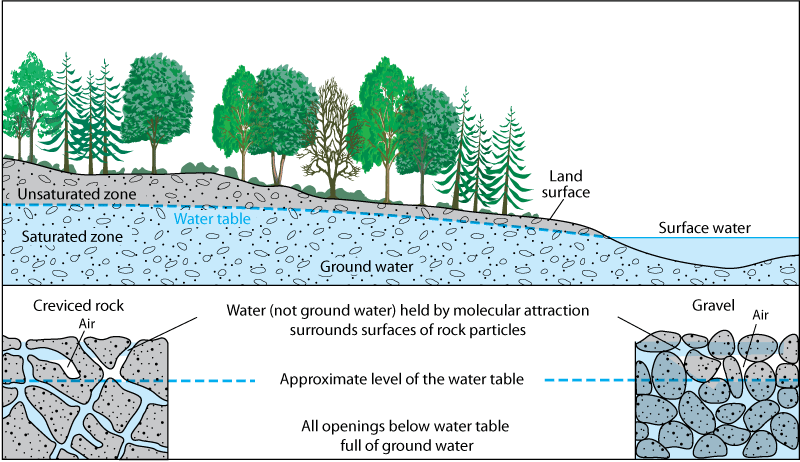Private Ground Water Wells
Many people in the United States receive their water from private ground water wells. EPA regulations that protect public drinking water systems do not apply to privately owned wells. As a result, owners of private wells are responsible for ensuring that their water is safe from contaminants. Here you may find information on the basics of wells, proper methods of siting and location for wells, all about testing and how often to test a well, proper treatment of wells and maintenance of wells , information on well retirement, common diseases and contaminants associated with wells, emergency treatment of wells, and answers to frequently asked questions about wells.
Ground Water and Wells
When rain falls, much of it is absorbed into the ground. Water that’s not used by plants moves downward through pores and spaces in the rock until it reaches a dense layer of rock. The water trapped below the ground in the pores and spaces above the dense rock barrier is called ground water, and this is the water we get when we drill wells. Another common term for ground water is "aquifer" or "ground water aquifer."
Private Ground Water Well Fast Facts
- Over 15 million U.S. households rely on private, household wells for drinking water 1.
- All private wells use ground water. If polluted ground water is consumed, it could cause illness. Ground water pollution can be caused by seepage through landfills, failed septic tanks, underground fuel tanks, fertilizers and pesticides, and runoff from urban areas.
- It is important that private ground water wells are checked regularly to ensure that the water is safe for drinking.
- Typically, private water systems that serve no more than 25 people at least 60 days of the year and have no more than 15 service connections are not regulated by the EPA.

- U.S. Census Bureau. Current Housing Reports, Series H150/07, American Housing Survey for the United States: 2007 [PDF - 642 pages]. U.S. Government Printing Office, Washington, D.C.: 20401, Printed in 2008.
Related Pages
- Private Well Water and Fluoride
- Prevention & Control - Immunocompromised Persons
- EPA - Setting Standards for Safe Drinking Water
- U.S. Geological Survey (USGS) Water Quality Information
- EPA - Poor Water Quality and Human Health
- National Ground Water Association - WellOwner.org
- Wellowner.org - Private Well Owner Tip Sheet
- Wellowner.org - Private Well Owner Hotline
- Page last reviewed: December 16, 2014
- Page last updated: December 16, 2014
- Content source:


 ShareCompartir
ShareCompartir